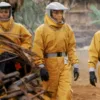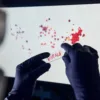The closure of the Faculty of Pharmacy, all hospitals in Slovenia and the cancellation of mass gatherings and events seems to many people to be complete nonsense, as we have not yet officially discovered patient 0 in Slovenia, i.e. the first patient with the SARS-CoV-2 virus. But is it really so? What are those in charge hiding from us and how are they deceiving the Slovenian public? Almost 500 people have already been infected in Italy!
General panic in recent days it seems complete nonsense, but those responsible know exactly why are they taking such drastic measures and why they reassure the public the way they do. "Evangelization" and hand washing mantra have become practically the only weapon against the virus SARS-CoV-2. There is nothing else left for us in Slovenia. We don't have any basic protective equipment, not for the medical staff nor for all the remaining support elements such as the police, army and National Guard. Extraordinary "soft" communication of the authorities but it shows how serious the situation is.
In other words... Why is SARS-CoV-2 so very dangerous and why do official institutions communicate it so "softly"?
- It is 23 times more deadly than the common flu. While he has common flu mortality 0.1 percent, has SARS-CoV-2 mortality 2.3 percent. So it is current the death rate is much higher than that of the common flu. Stating the number of people who get the flu every year is not a relevant argument. The mortality of a certain disease is relevant, if it occurs.
- It is approx 5 times more contagious or as contagious common flu. While a patient who contracted the flu, it transferred to one person, the virus SARS-CoV-2 spreads much more efficiently. One infected person should infect 4 to 6 other people.
- Person, infected with a virus, it can be completely without symptoms. This is also proven by the fact that two Slovenian citizens, infected in Japan, feels completely normal and they show no signs of infection. However, they are contagious, which means they are virus carrier and thus committed to quarantine in one of the hospitals in Japan. Although they do not cough or sneeze, their secretions contain the virus.
- It is the younger brother of the SARS virus, as she shares with him a large proportion of hereditary material: 80 percent. That is also why it has the "same" name. The essential difference between a virus, which erupted in 2002, and the virus that is erupted in 2019, is the death rate. SARS was between November 2002 and July 2003 killed 774 people and infected 8,098. The new disease, known as COVID-19, has killed nearly as of December 23 four times as many people, namely 2,805. So while the virus SARS had a death rate of around 10 percent, the new SARS-CoV-2 virus has it 2.3 percent.
- It's a virus unknown, or it is a big unknown for scientists. The new coronavirus has a mutation similar to HIV, which means its ability to bind to human cells can be up to 1,000 times stronger than that of the virus SARS, they show new research by scientists in China and Europe. (link) This also explains its high contagiousness and ability to transmit. Professor Ruan Jishou and his team from the university Nankai in Tianjin when examining the gene sequence of the new coronavirus, they found a section of mutated genes that in SARS from the year 2002 did not exist, but were similar to those found at the HIV virus and Ebola.
- The virus can mutate and become more deadly. All viruses can mutate. So the common flu virus mutates every year and this is also why vaccines are often unsuccessful and do not prevent infection. The mutation can also mean a higher mortality rate. Or a different property of the virus. If CoV 2 were to become as deadly as SARS in 2002, it could completely paralyze the world in the worst case scenario.
- The deaths of people who are not in the risk group over the age of 65 are also unexplained. That is, individuals who were healthy and whose immune system should successfully defend against the virus SARS-CoV-2 or the disease that triggers it COVID-19. Thus, a large number of deaths in China are also among medical workers. Which is extremely unusual and may indicate an early mutation of the virus or the still unexplained effects of the virus on different individuals. The doctor himself also died Li Wenliang, who first discovered the virus in December.

Black scenario: is the panic of the inhabitants of Slovenia justified?
With media photos showing closed cities in the immediate neighborhood, with photos of the welding of entrances to skyscrapers in the city Wuhan on China with the goal of implementing a quarantine, we seem to be the closest thing to an apocalyptic scenario in modern history. But these things have happened before. The black plague, which broke out in the 14th century, killed as much as a third of the entire European population, more than 25 million people. But those were completely different times.
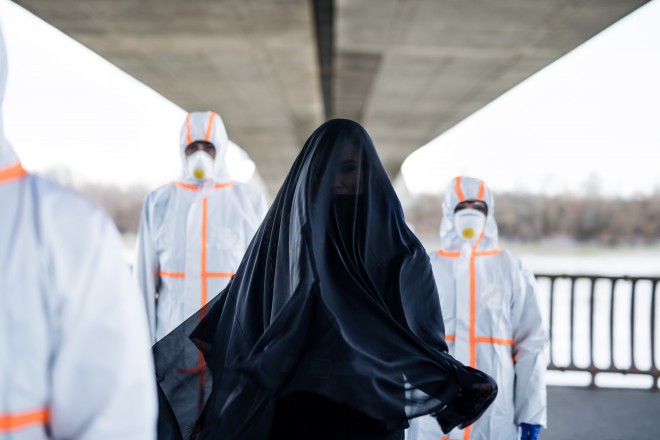
But despite the progress, it seems to be ours socio-economic ecosystem yet a bit more vulnerable and that even a small number of sufferers can completely stop it economy and at the same time interrupts the supply of the most basic goods. This is also why individuals have already started stockpiling food and other essential necessities in recent days. Some companies have already introduced smart work from home here as well. Among them are quite a few German companies. Today's closure of the Faculty of Pharmacy only confirms the statement that well-informed people know how the coronavirus is very dangerous (Sars-CoV-2). And because the virus caught us completely unprepared, those in charge can only advise hand washing. Which is completely irresponsible and it shows the breakdown of the healthcare system. They also remind us of this neighbors Croatia, who are dissatisfied with our measures and preparedness and are sending special sanitary units to the borders. In fact, everyone, including those in charge, is aware that the virus is already in Slovenia, but the health workers have not yet detected it.
Why haven't we confirmed any cases in Slovenia yet? Because the patient is still waiting in the queue!
The biggest threat to the economy
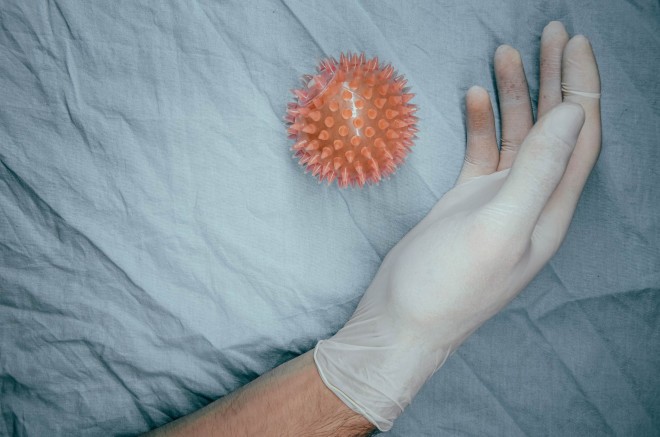
The biggest the danger of the coronavirus is of an economic nature, as it can trigger a new recession. The closure of the vast majority of production in northern Italy will also have an impact on the Slovenian economy, which may suffer as a result early stronger cooling. Slovenian tourism is already feeling the first consequences, where more and more trips are canceled every day. With a larger outbreak in Slovenia, i.e. more than 500 patients, and the economy would be completely paralyzed for a long time. Or, according to forecasts, at least a good month, which would mean negative economic growth at the end of the year. Such a number of patients could already trigger a stronger economic recession. This is also why certain companies are already turning on crisis preparation mechanisms and introducing basic crisis measures financial instruments, such as withholding payments, taking care of optimal liquidity and increases revolving credits and others financial instruments.
What can we do? Common sense and moderation are required!
These days it is important that as individuals we act in self-protection. The easiest way to do this is to introduce certain rituals and avoid certain activities. Namely, if we all do this, we can isolate the virus, which is certainly already on the soil of our country, but has not yet been discovered, to the extent that that the infection will die down. Which in all likelihood will happen even with the arrival of warmer weather, which does not correspond to viruses of this type.
- excellent hand hygiene, even with disinfectants, more often than usual;
- self-isolation in case of any signs of illness;
– work from home, if possible;
– we do not go to mass events;
– we do not go to large shopping centers;
- we do not go to gyms, fitness centers and other places where such activities are carried out;
– we only carry out the most urgent and quick purchases;
- we do not travel to areas where infections have been detected.
We have collected some basic information about the coronavirus in the following lines.
What is the SARS-CoV-2 coronavirus?
The coronavirus is in December 2019 appeared in Wuhan, China. The new coronavirus has been named by the WHO (World Health Organization). SARS-CoV-2, the disease caused by the virus, however COVID-19. The new strain of the virus from Wuhan belongs to betacoronaviruses, group 2B, and shows about 80% genetic affinity with the SARS virus (SARS-CoV). The cases were initially linked to the detention of seafood and other animals in a market in Wuhan. It is suspected that he is the source of infection (which has not yet been identified) is one of the animal species.
Although coronaviruses were discovered in the 1960s, other representatives of coronaviruses were discovered in 2003 SARS-CoV (the causative agent of SARS), discovered in 2004 HCoV NL63, discovered in 2005 HKU1, discovered in 2012 MERS-CoV (the causative agent of mersa or camel flu). Compared to older coronaviruses, newly discovered coronaviruses can also cause very severe respiratory infections.
In Europe, the most worrying situation at the moment is with our western neighbours, in Italy (in the regions of Lombardy, Veneto, Emilia Romagna, Piedmont and Rome), where by February 23, 150 people had contracted the coronavirus, 3 had died. To date, more than 460 people have become ill. 12 people have died. European Center for Disease Prevention and Control (European Center for Disease Prevention and Control – ECDC) daily updates data related to the SARS-CoV-2 coronavirus and is available at the following link (in English): ecdc.europa.eu.
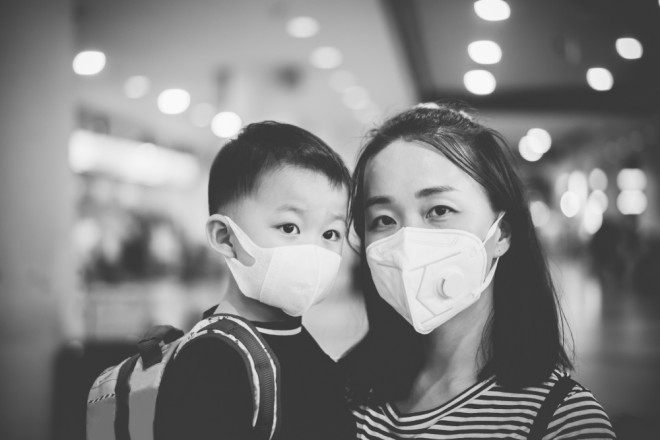
How is the coronavirus transmitted?
Now that you know what is coronavirus, but let's see how it transfers. The new coronavirus is transmitted between people drop by drop. This means that it is required to download closer contact with the patient, the distance to the patient is a meter and a half. It is possible to get infected with the new coronavirus upon contact with contaminated surfaces, but it has not yet been reliably proven, they wrote at NIJZ.
Although it has not been proven that the new coronavirus is transmitted through the air (aerogenic), it is advised caution and protection in case of particularly risky interventions in a medical institution. Staying in the same room with the patient (if we are at a distance of one and a half meters) does not pose a risk.
What are the symptoms of the coronavirus?
On the question, what is the coronavirus and how is it transmitted, we have already answered, now let's look at the symptoms. On NIJZ they wrote that the disease manifests itself with fever, cough, malaise, fatigue, wheezing and feeling short of breath, which is common for pneumonia. It is to confirm or rule out infection with the new coronavirus microbiological testing required. The coronavirus can be detected in nasopharyngeal swabs, pharyngeal swabs, respiratory secretions, and other infectious materials. The incubation period of the virus is between 2 and 12 days, an average of 6 days.
A milder form of infection is said to occur in 80 percent of people, About 20 percent of those affected are said to have a more severe form. There is no exact death rate yet, but according to China, it is estimated at 2 to 4 percent of those infected. Most are elderly who already have chronic diseases of the heart, lungs, diabetes etc. Anyone can get sick, but the most at risk are the elderly, children and smokers.
How to prevent infection with the coronavirus?
Yes it will coronavirus stayed as far away from us as possible, we have to take care of it ourselves, namely with daily preventive measures. What should we consider?
- We wash our hands regularly with soap and water.
- We avoid close quarters with people who show signs of an infectious disease.
- We do not touch our eyes, nose and mouth.
- If we get sick, we stay home.
- We ensure regular ventilation of closed spaces.
- We avoid closed spaces where many people stay.
- Before coughing/sneezing, cover your mouth and nose with a tissue. Cough/sneeze into the upper part of the sleeve. Throw the handkerchief in the bin after each use. Wash your hands with soap and water after coughing/sneezing.
- If soap and water are not available, use a dedicated hand sanitizer (at least 60% alcohol content) to disinfect hands.
Face protection mask
Since the coronavirus is transmitted by droplets, it is also necessary to protect your face. This is where they come in face masks. With these, it is very important that they are positioned correctly, i.e. that they cover both the mouth and the nose. When they get wet, they no longer provide protection and must be replaced with new ones. Currently, the supply of these masks in Slovenia is very limited or it is not possible to buy them at all. We've looked into where we can get them, and the biggest selection is here.
How is the coronavirus treated?
For the coronavirus there is no antiviral drug, just like thato there is no vaccine. This means that the treatment is symptomatic. Medicines are being tried ease the patient's problems, it also tries to replace the function of the organs. If the lungs are more severely affected, the patients are mechanically ventilated, oxygen is added, fluid is replaced, etc.
